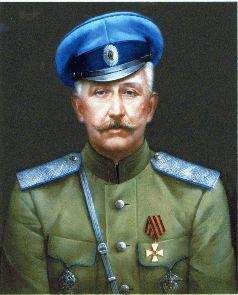Эллиот Аронсон - Общественное животное. Введение в социальную психологию

Помощь проекту
Общественное животное. Введение в социальную психологию читать книгу онлайн
69. Johnson, Т.Е., amp; Rule, B.G. (1986). Mitigating circumstances information, censure, and aggression. Journal of Personality and Social Psychology, 50, 537-542.
70. Josephson, W.L. (1987). Television violence and children's aggression: Testing the priming, social script, and disihibition predictions. Journal of Personality and Social Psychology, 53,882-890.
71. Berkowitz, L. (1965). Some aspects of observed aggression. Journal of Personality and Social Psychology, 2, 359-369.
72. Berkowitz,L., amp; Geen, R. (1966). Film violence and the cue properties of available targets. Journal of Personality and Social Psychology, 3, 525-530.
73. Berkowitz, L., amp; LePage, A. (1967). Weapons as aggression-eliciting stimuli, Journal of Personality and Social Psychology, 7, 202-207.
74. Berkowitz, L. (1971). Control of aggression (p. 68). Unpublished.
75. Zimbardo, P. (1969). The human choice: Individuation, reason, and order versus deindividuation, impulse, and chaos. In W. Arnold and D. Levine (Eds.), Nebraska Symposium on Motivation, 17, 237-307.
76. Mullen, В. (1986). Atrocity as a function of lynch mob composition: A self-attention perspective. Personality and Social Psychology Bulletin, 12, 187-197.
77. Clark, К. (1971). The pathos of power: A psychological perspective. American Psychologist, 26,1047-1057.
78. Aristotle (1954). Rhetoric. In W.R. Roberts (Trans.), Aristotle, rhetoric and poetics (p. 22). New York: Modern Library. Рус. пер. - ‹Риторика Аристотеля›.
79. Sears, R., Maccoby, E., amp; Levin, H. (1957). Patterns of child rearing. Evanston, IL: Row, Peterson. Baumrind, D. (1966). Effects of authoritative parental control on child behavior. Child Development, 37, 887-907. Becker, W. (1964). Consequences of different kinds of parental discipline. In M.L.Hoffman and L.W.Hoffman (Eds.), Review of Child Development Research (Vol. 1). New York: Russell Sage. Owens, D., amp; Straus, M. (1975). The social structure of violence in childhood and approval of violence as an adult. Aggressive Behavior, 1, 193-211.
80. Hamblin, R., Buckholt, D., Bushell, D., Ellis, D., amp; Ferritor, D. (1969, January). Changing the game from ‹get the teacher› to ‹learn›. Trans-Action, pp. 20-31.
81. ffaney, С. (1979).Apsychologistlooksatthecriminaijusticesystem. InA. Calvin (Ed.), Challenges and alternatives to the American criminal justice system (pp. 77-85). Ann Arbor, MI: University International Press.
82. Eichmann, C. (1966). The impact of the Gideon decision on crime and sentencing in Florida. Tallahassee, FL: Division of Corrections Publications.
83. ffaney, C., Banks, C., amp; Zimbardo, P. (1973). Interpersonal dynamics in a simulated prison. International Journal of Criminology and Penology, /, 69-97.
84. Aronson, E., amp; Carlsmith, J.M. (1963). The effect of severity of threat on the devaluation of forbidden behavior. Journal of Abnormal and Social Psychology, 66, 584-588. Freedman, J. (1965). Long-term behavioral effects of cognitive dissonance. Journal of Experimental and Social Psychology, 1, 145-155.
85. Olweus, D. (1991). Bully/victim problems among school-children: Basic facts and effects of a school-based intervention program. In D. Pepler amp; K. Rubin (Eds.), The development and treatment of childhood aggression (pp. 411-448). Hilisdale, NJ: Eribaum.
86. U.S. President's Commission on Law Enforcement and Administration of Justice. (1967). The challenge of crime in afree society: A report. Washington, D.C.: U.S. Government Printing Office.
87. Bandura, A., Ross, D., amp; Ross, S. (1963). Imitation of film-mediated aggressive models. Journal of Abnormal and Social Psychology, 66, 3-11. Bandura, A., Ross, D., amp; Ross, S. (1963). Vicarious reinforcement and imitative learning. Journal of Abnormal and Social Psychology, 67,601-607.
88. Brown, P., amp; Elliot, R. (1965). Control of aggression in a nursery school class. Journal of Experimental Child Psychology, 2, 103-107.
89. Davits, J. (1952). The effects of previous training on postfrustration behavior. Journal of Abnormal and Social Psychology, 47, 309-315.
90. Baron, R.A., amp; Kepner, C.R. (1970). Model's behavior and attraction toward the model as determinants of adult aggressive behavior. Journal of Personality and Social Psychology, 14,335-344.
91. Baron, R.A. (1976). The reduction of human aggression: A field study of the influence of incompatible reactions. Journal of Applied Social Psychology, 6, 260-274.
92. Feshbach, S. (1971). Dynamics and morality of violence and aggression: Some psychological considerations. American Psychologist, 26, 281-292.
93. Michener, J. (1971). Kent State: What happened and why. New York: Random House.
94. Feshbach, N., amp; Feshbach, S. (1969). The relationship between empathy and aggression in two age groups. Development Psychology, 1, 102-107.
95. Feshbach, N. (1978, March). Empathy training: A field study in affective education. Paper presented at the American Educational Research Association, Toronto, Ontario, Canada. Feshbach, N., amp; Feshbach, S. (1981, April). Empathy training and the regulation of aggression: Potentialities and limitations. Paper presented at the convention of the Western Psychological Association.
96. Hammock, G.S., amp; Richardson, D.R. (1992). Aggression as one response to conflict. Journal of Applied Social Psychology, 22, 298-311.
К главе 7 Предрассудок
1. Poussaint, Л. (1971), A Negro psychiatrist explains the Negro psyche, in Confrontation (pp. 183-184). New York: Random House.
2. Clark, K., amp; Clark, M. (1947). Racial identification and preference in Negro children. In T.M. Newcomb and E.L. Hartley (Eds.), Readings in Social Psychology (pp. 169-178). New York: Holt.
3. Goldberg, P. (1968, April). Are women prejudiced against women? Trans-Action, pp. 28-30.
4. Jemmott, J.B., amp; Consoles, E. (1989). Social status, the status distribution, and performance in small groups. Journal of'Applied Social Psychology, 19, 584-598.
5. Hraba, J., amp; Grant, G. (1970). Black is beautiful: A reexamination of racial prejudice and identification. Journal of Personality and Social Psychology, 16, 398-402. Banks, С. (1976). White preference in blacks: A paradigm in search of a phenomenon. Psychological Bulletin, 83, 1179-1186. Ward, С. (1979). Differential evaluation of male and female expertise: Prejudice against women? British Journal of Social and Clinical Psychology, 18, 65-69. Ward, С. (1981). Prejudice against women: Who, when, and why? Sex Roles, 7, 163-171.
6. Petfigrew, Т.Е. (1989). The nature of modern racism in the United States. Revue Internationale de Psychologie Sociale, 2, 291-303.
7. Time, February 2, 1987, pp. 18-21.
8. AIlporf, G. (1954, 1980). The nature of prejudice {p. 13). Reading, MA:Addison-Wesley.
9. Newsweek, November 25, 1974, p. 39.
10. Neugarten,B. (1946). Social class and friendship among schoolchildren. American Journal ofSociology, 5/, 305-313.
11. Bond, C.F., Jr., DiCandia, C.G., amp; MacKinnon, J.R. (1988). Response to violence in a psychiatric setting: The role of the patient's race. Personality and Social Psychology Bulletin, 14,448-458.
12. Bodenhausen, G., amp; Wyer, R. (1985). Effects of stereotypes on decision making and information-processing strategies. Journal of Personality and Social Psychology, 48, 267-282.
13. Shafer, D.R., amp; Wallace, A. (1990). Belief congruence and evaluator homophobia as determinants of the attractiveness of competent homosexual and heterosexual males. Journal of Psychology amp; Human Sexuality, 3, 67-87.
14. Steele, С. (1992, April). Race and the schooling of black Americans. The Atlantic Monthly, pp. 68-78.
15. Steele, С., amp;Aronson, J. (1994). Stereotype vulnerability: Apsychological approach to underachievement among black Americans. Paper presented at the meeting of the Western Psychological Association, Kona, Hawaii, April, 1994.
16. Pettigrew, T.F. (1979). The ultimate atrribution error: Extending Allport's cognitive analysis of prejudice. Personality and Social Psychology Bulletin, 5, 461-476.
17. Ibid.
18. Feldman-Summers, S., amp; Kiesler, S.B. (1974). Those who are number two try harder: The effect of sex on attributions of causality. Journal of Personality and Social Psychology, 30,80-85.
19. Deaux, К., amp; Ernsweiler, Т. (1974), Explanations of successful performance on sex-linked tasks: What is skill for male is luck for the female. Journal of Personality and Social Psychology, 29, 80-85.
20. Nicholls, J.G. (1975). Causal attributions and other achievement-related cognitions: Effect of task outcome, attainment value, and sex. Journal of Personality and Social Psychology, 31,379-389.
21. Weinberg, R.S., Richardson, P.A., amp; Jackson, A. (1983). Effect of situation criticality on tennis performance of males and females. Newsletter of the Society for the Advancement of Soda! Psychology, 9, 8-9.
22. Turner, M., amp; Pratkanis, A. (1993). Effects of preferential and meritorious selection on performance: An examination of intuitive and self-handicapping perspectives. Personality and Social Psychology Bulletin, 19, 47-58.
23. Deaux, К., amp; Таупог, J. (1973). Evaluation of male and female ability: Bias works two ways. Psychological Reports, 32, 261-262.
24. Lerner, M. (1965). Evaluation of performance as a function of performer's reward and attractiveness. Journal of Personality and Social Psychology, 1, 355-360. Lerner, M. (1980). The justice motive. New York: Plenum.
25. Furnham, A., amp; Gunter, B. (1984). Just world beliefs and attitudes toward the poor. British Journal of Social Psychology, 23, 265-269.
26. Fischhoff, В., amp; Beyth, R. (1975). ‹I knew it would happen›: Remembered probabilities on once-future things. Organizational Behavior and Human Performance, 13, 1-16.
27. Janoff-Bulman, R., Tirnko, C., amp; Carli, L.L. (1985). Cognitive biases inblaming the victim. Journal of Experimental Social Psychology, 21, 161-177.
28. Gould, S. (1977). Eversince Darwin: Reflectionsonnatural history (p. 243). New York: W.W. Norton.
29. Pearson, K., amp; Мои!, M. (1925). The problem of alien immigration into Great Britain, illustrated by an example of Russian and Polish Jewish children. Annals of Eugenics, 1,5-127.
30. Janis, 1., amp; Field, P. (1959). Sex difference and personality factors related to persuasibility. In C.I. Hoviand and 1.L. Janis (Ed.), Personality and persuasibility (pp. 55-68). New Haven: Yale University Press.
31. Sistrunk, F., amp; McDavid, J. (1971). Sex variable in conforming behavior. Journal of Personality and Social Psychology, 77, 200-207.
32. Word, С., Zanna, M., amp; Cooper, J. (1974). The nonverbal mediation of self-fulfilling prophecies in interracial interaction. Journal of Experimental Social Psychology, 10,109-120.
33. Snyder, M. (1984). When belief creates reality. In L. Berkowitz (Ed.), Advances in experimental social psychology (Vol. 18, pp. 247-305). Orlando, FL: Academic Press.
34. Merton, R.F. (1968). The self-fulfilling prophecy. Antioch Review, 8, 193-210.
35. Snyder, M., amp; Swann, W.B., Jr. (1978). Hypothesis-testing processes in social interactions. Journal of Personality and Social Psychology, 36, 1202-1212.
36. Обзор результатов - см.: Pettigrew, T.F. (1985). New black-white patterns: How best to conceptualize them? Annual Review of Sociology, II, 329-346.
37. Frey, D.L., amp; Gaertner, S.I. (1986). Helping and the avoidance of inappropriate interracial behavior: A strategy that perpetuates a non-prejudiced self-image. Journal of Personality and Social Psychology, 50, 1083-1090.
38. Devine, P.G. (1989). Stereotypes and prejudice: Their automatic and controlled components. Journal of Personality and Social Psychology, 56, 5-18.
39. Bern, D., amp; Bern, S. (1970, November). We're all nonconscious sexists. Psychology Today, pp. 22-26,115-116.
40. Weitynan, L., Eifler, D., Hokada, E., amp; Ross, C. (1972). Sex-role socialization in picture books for preschool children. American Journal of Psychology, 77, 1 125-1 150. Kolbe, R., amp; LaVoie, J. (1981). Sex-role stereotyping in preschool children's picture books. Social Psychology Quarterly, 44, 369-374.
41. Hartley, R. (1960), Children's concepts of male and female roles. Merrill-Palmer Quarterly, 6,83-91.
42. Lipman-Blumen, J. (1972). How ideology shapes women's lives. Scientific American, 226(), 34-42.
43. Gray, S. W. (1975). Masculinity-femininity in relation to anxiety and social acceptance. Child Development, 28, 203-214.
44. Broverman, 1.К., Vogel, S., Broverman, D., Clarkson, F., amp; Rosencrant^, P. (1972). Sex-role stereotypes: A current appraisal. Journal of Social Issues, 28, 59-78.
45. Porter,N., amp; Geis,F.(l9Sl). Women and nonverbal leadership cues: When seeing is not believing. In C. Mayo and N. Henley (Eds.), Gender and nonverbal behavior. New York: Springer-Verlag.























